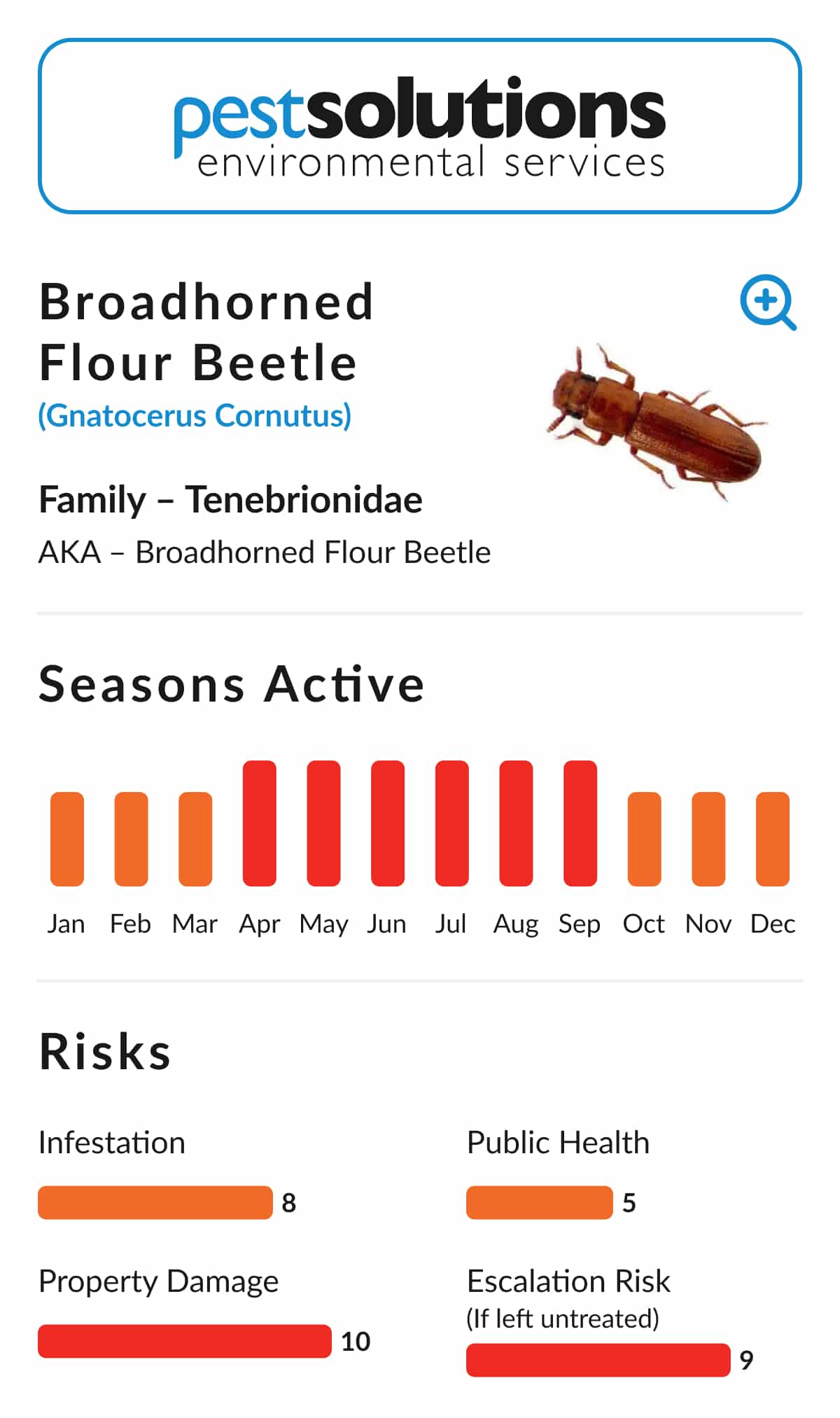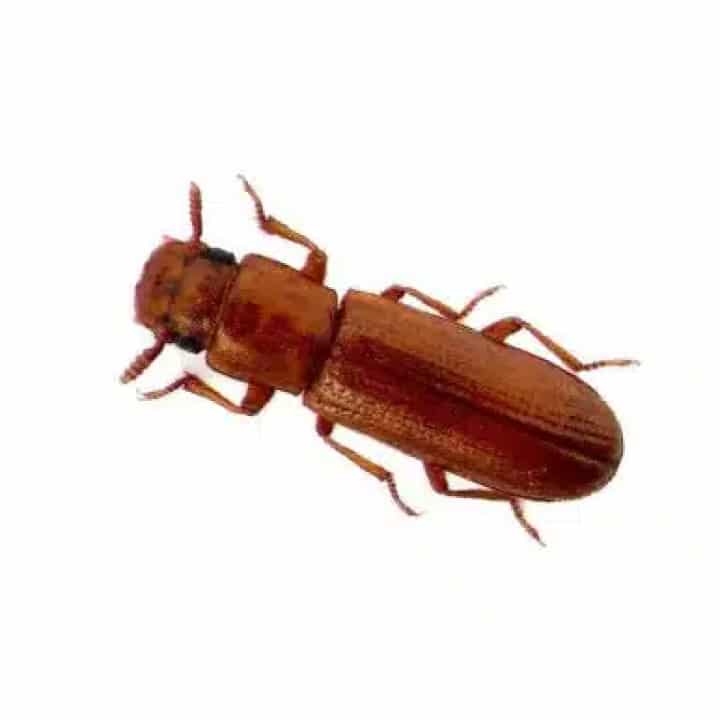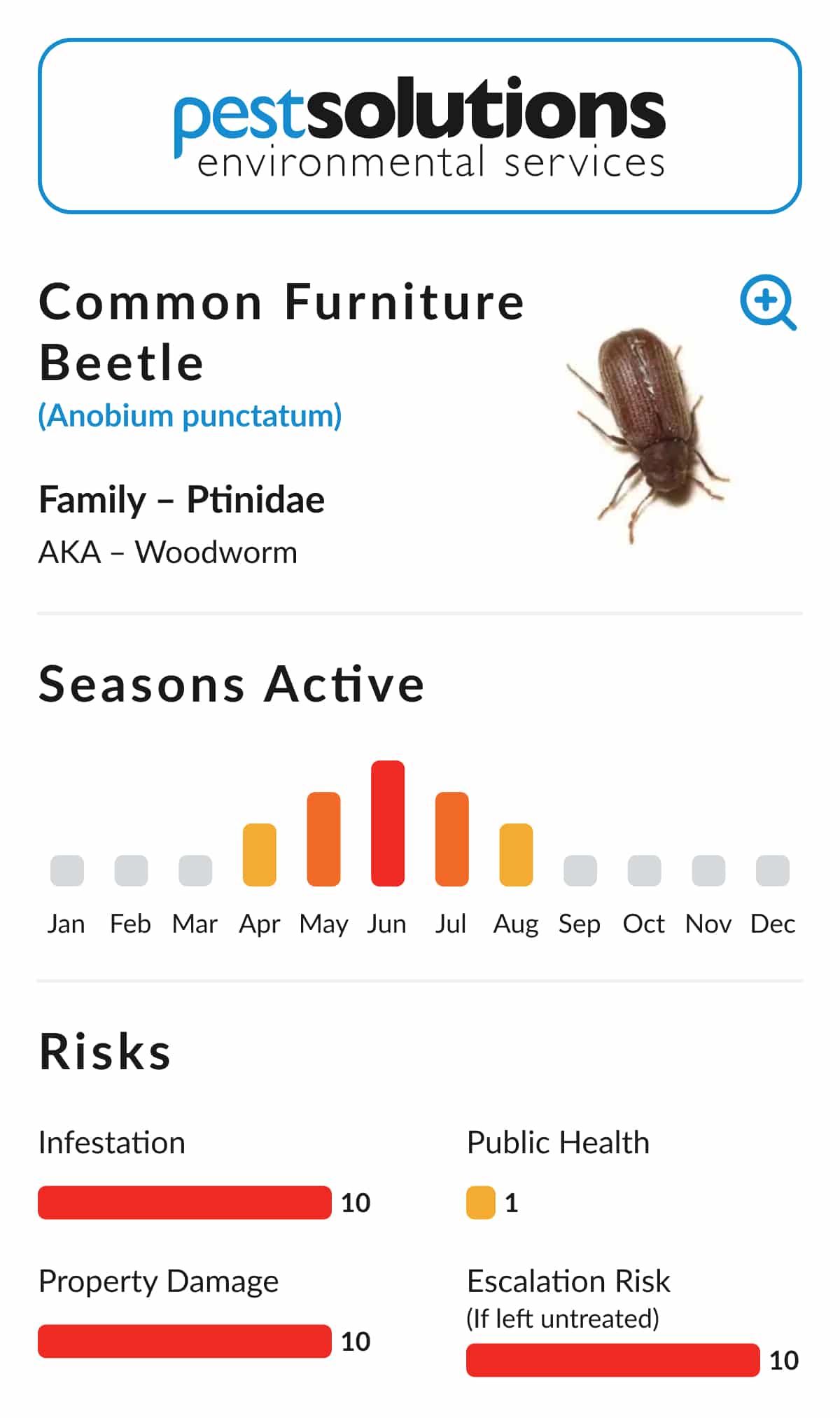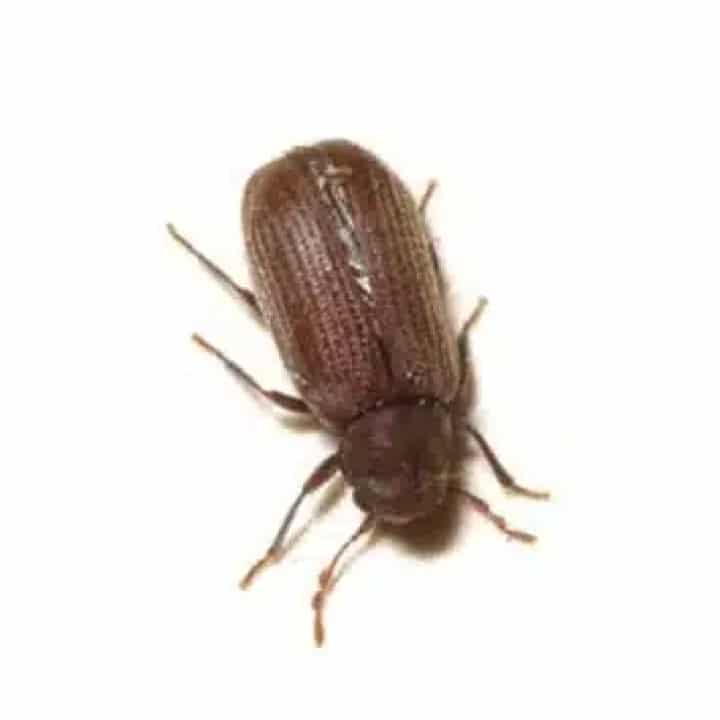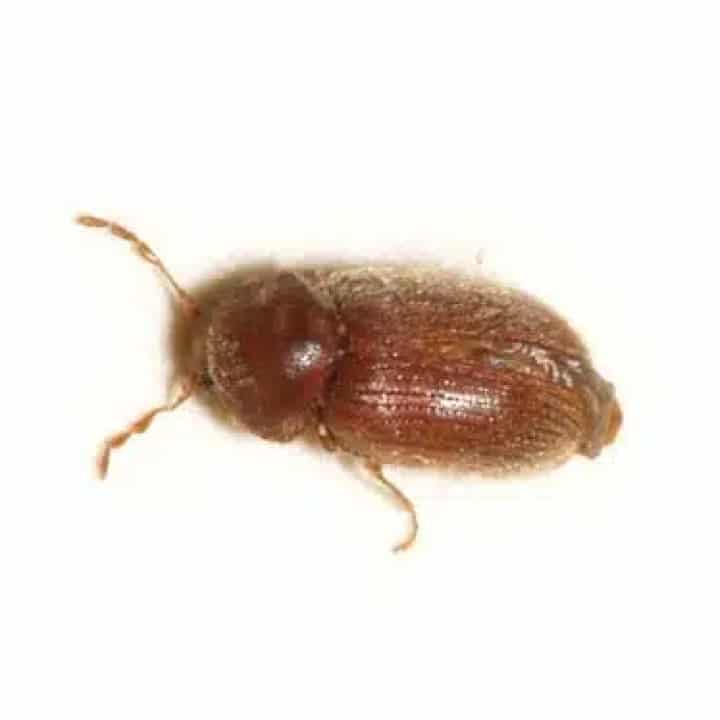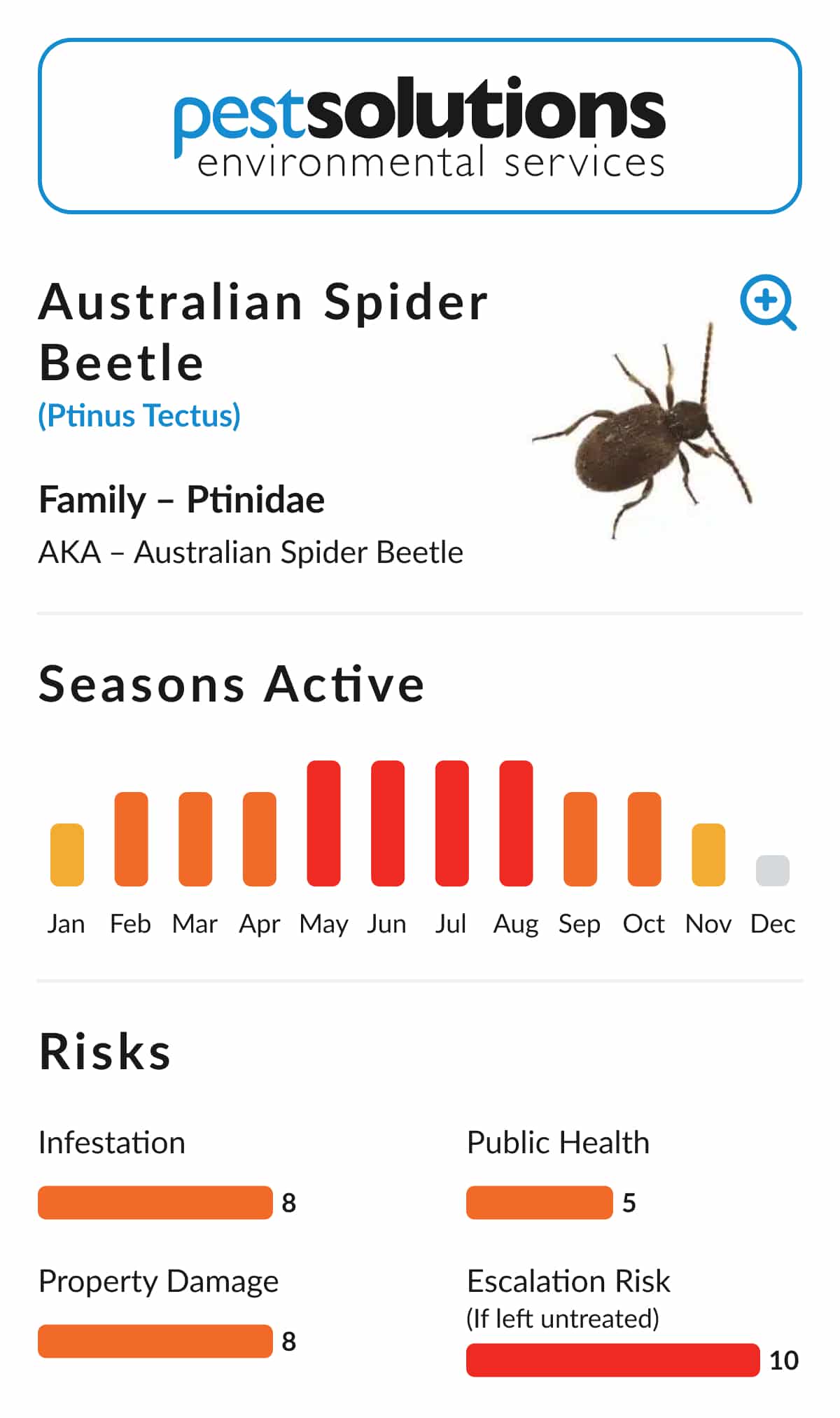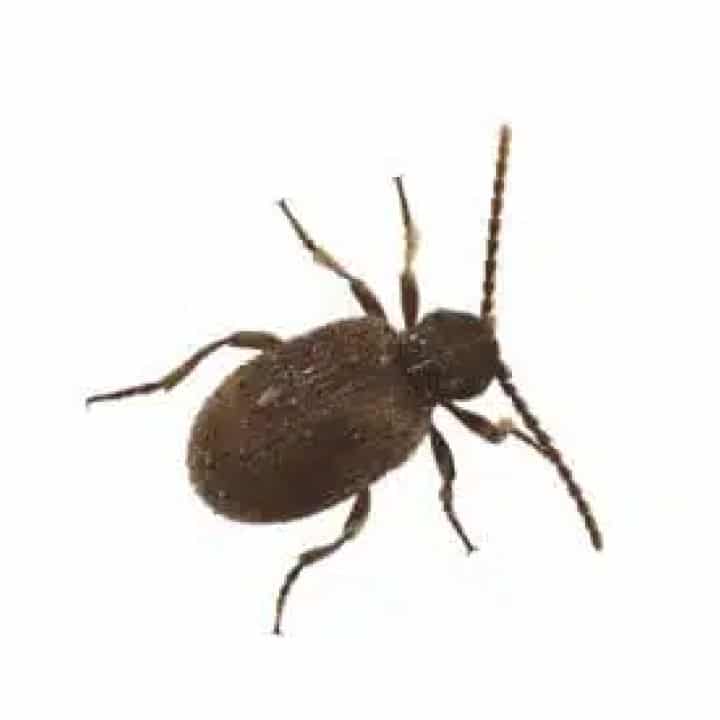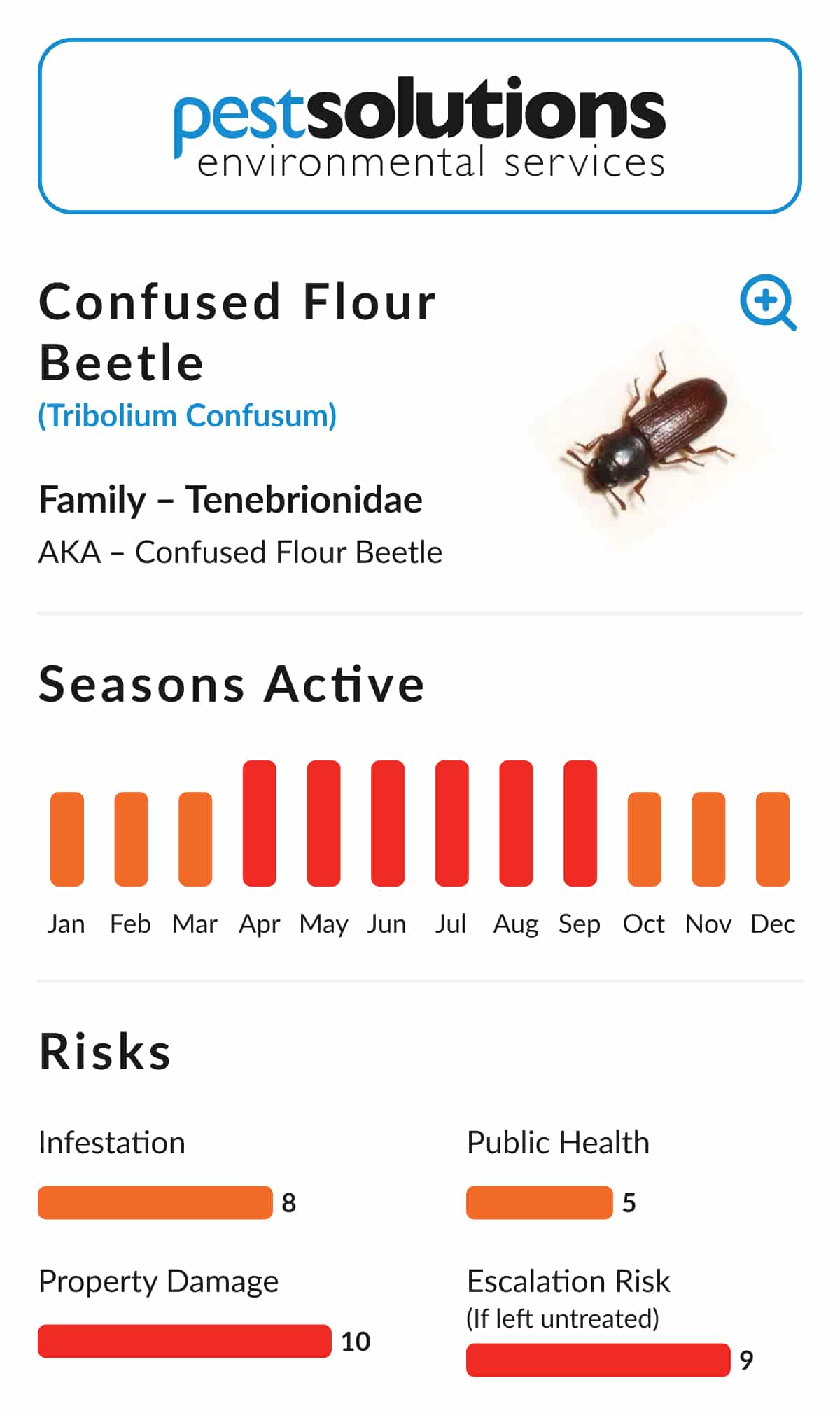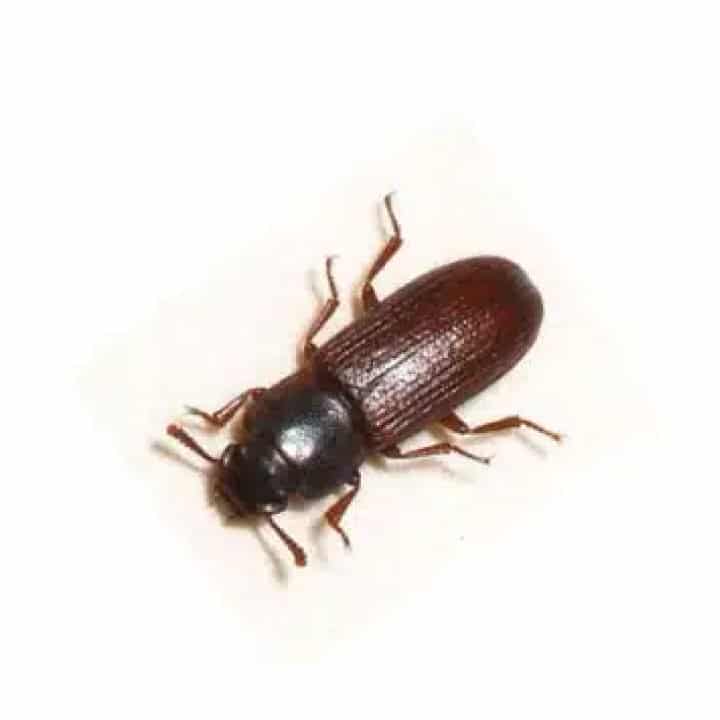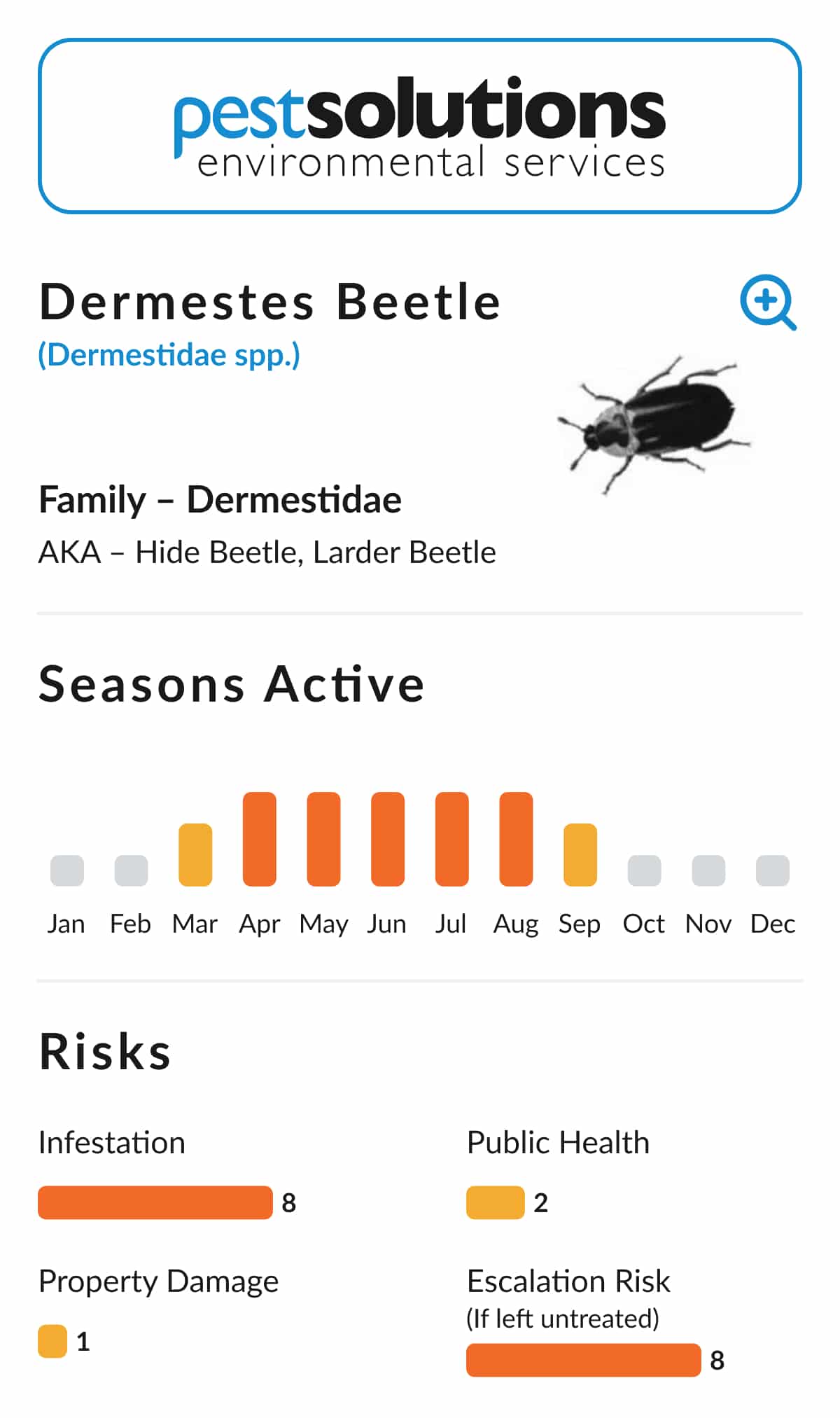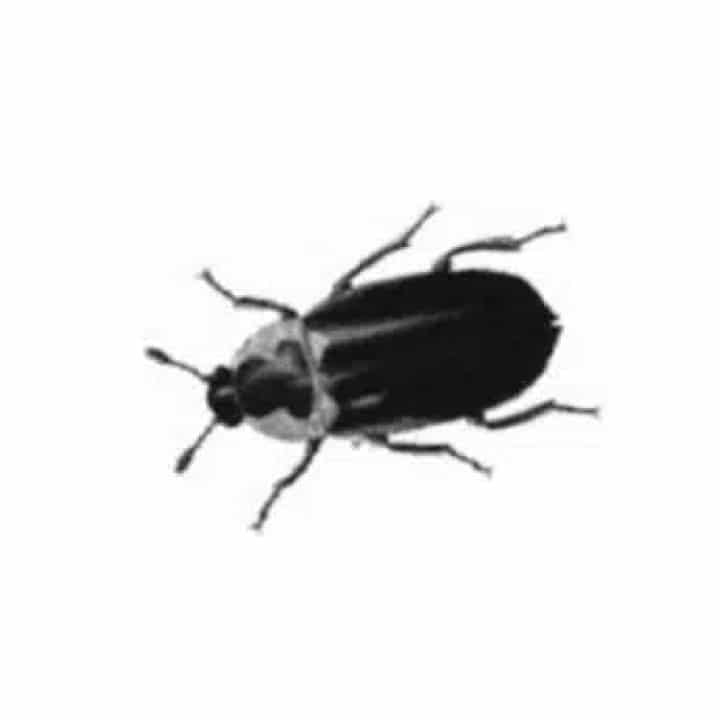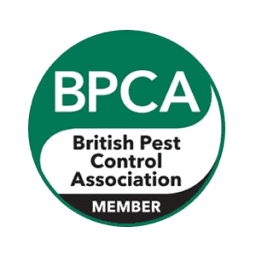Habitat and Distribution – Broadhorned Flour Beetle (Gnatocerus cornutus)
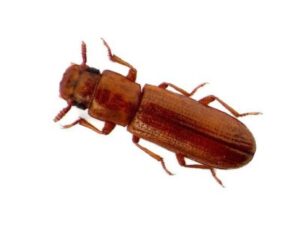
Biology – Broadhorned Flour Beetle (Gnatocerus cornutus)
The Broadhorned Flour Beetle is slightly larger than the Rust-Red Flour Beetle, measuring approximately 4 mm in length. It has a similar overall body shape and colour, but adult males are distinctive due to their broad, enlarged mandibles. These features differentiate them from the more slender-jawed Gnatocerus maxillosus (Slender-horned Flour Beetle). The minimum temperature for breeding is around 16°C, with optimal development occurring between 24°C and 30°C. When conditions are favourable, the full life cycle can be completed in approximately two months.
Why They’re a Problem – Broadhorned Flour Beetle (Gnatocerus cornutus)
This beetle is considered a minor pest in the context of stored product infestations. It can infest damaged or spoiled grain and cereal products, including flour, particularly when hygiene conditions allow for contamination. However, in the UK, it is not often encountered and is generally considered less of a concern than more widespread beetles such as the Rust-Red or Confused Flour Beetles.
Control and Prevention – Broadhorned Flour Beetle (Gnatocerus cornutus)
Control of the Broadhorned Flour Beetle follows standard practices used for other flour beetle species:
- Maintain high hygiene standards in food storage and processing areas
- Apply residual insecticide treatments to surfaces and known harbourage points
- Monitor using bait traps to detect early signs of activity
- Fumigation may be required in large-scale food production environments, especially where infestations are established or hard to reach
Preventing contamination and maintaining clean, dry storage conditions are essential to reducing the risk of infestation.
Professional Support – Broadhorned Flour Beetle (Gnatocerus cornutus)
Although the Broadhorned Flour Beetle is a less common pest in the UK, it can still pose a risk in food storage and processing environments when conditions allow. Pest Solutions offers expert identification and pest control services tailored to stored product insects.
